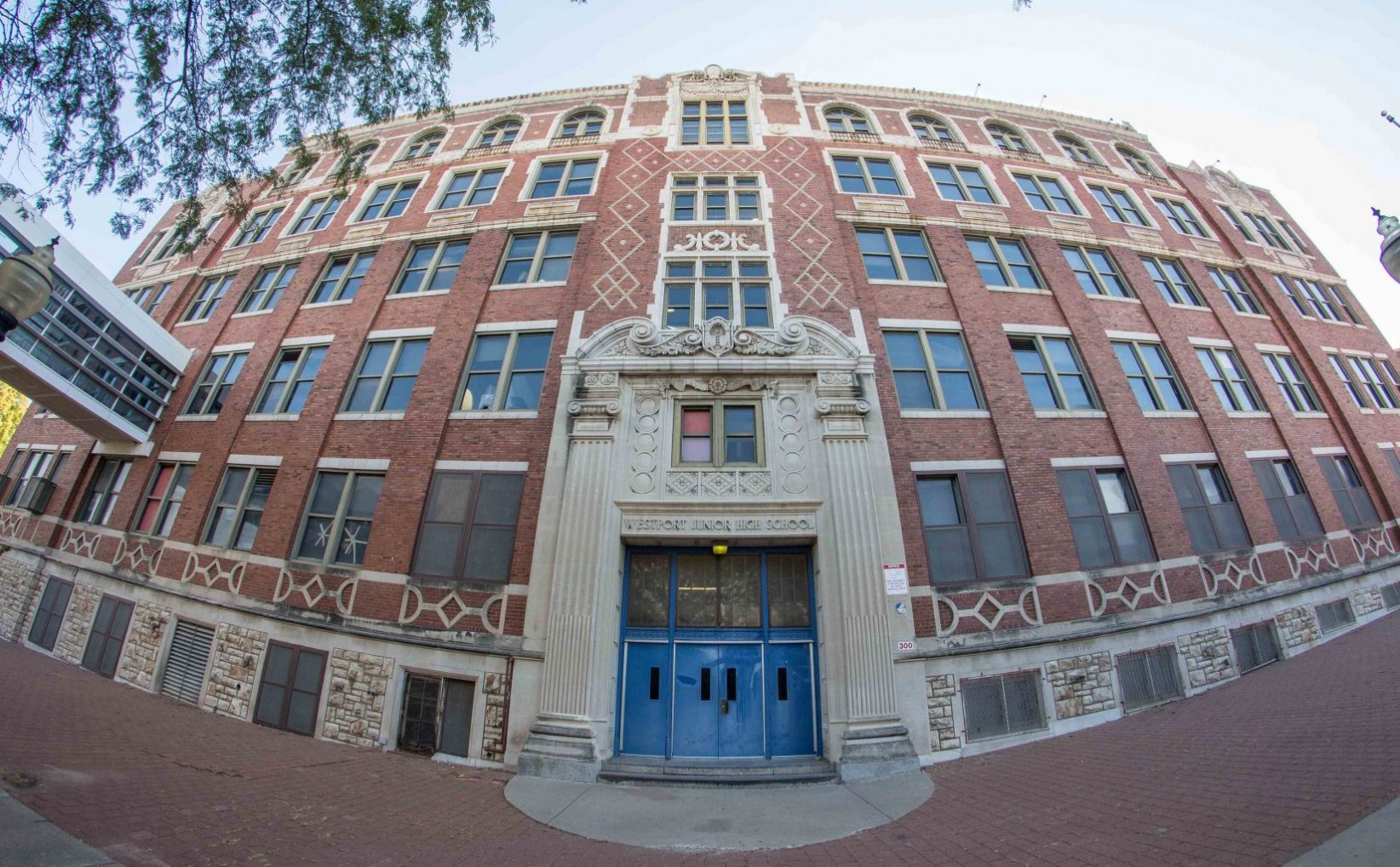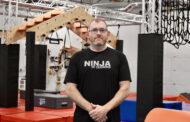For an update on this piece, click here.
Amid the dust and drilling at the yet-to-be-open Plexpod Westport Commons is a little-known artistic gem for Kansas City.
At the heart of a project that marries history and innovation, the colossal coworking facility that was formerly Westport Junior High features a vibrant — albeit deteriorating — mural inspired by local painting legend Thomas Hart Benton.
Featuring Great Plains Indians, frontiersmen and the rise of industrialism, the “History of Kansas City” was painted by at least seven Kansas City students between 1948 and 1952.
In Benton’s abstract and “regionalist” style, the artwork relays a narrative that pre-dates Kansas City’s founding and — in linear fashion — concludes in 1952 when high-rise office buildings began dominating the Kansas City skyline. The mural spans more than 60 feet across three walls, jutting in and out of chalk- and cork-boards in what was a middle school classroom that laid to rot since 2010.
The mural, room and building itself, however, is now a part of a massive restoration and modernization project led by Plexpod founder Gerald Smith and the Sustainable Development Partners of Kansas City.
Gerald and his partners are revamping the historic, 160,000 square-foot middle school to become the largest coworking facility in the world, featuring more than 50 open “team spaces,” 40 offices and 200 flexible desks for rent. The gigantic project also will boast a business incubator, an event space, a maker’s studio, coffee shop and several meeting spaces — such as the one that will house “The History of Kansas City.”
But unlike its conference room counterparts, Smith said that he hopes the room featuring the artwork will serve as a distinguished meeting space for Kansas City.
“If tenants have a big pitch or meeting, this will be the space,” Smith said. “We’re going to make an incredible meeting space out of it.”
While the details are still unclear, Smith said that he invited a local historian to Westport Commons to analyze the mural, who helped research how the artwork came to be.
In 1948, Benton worked as an instructor at the Kansas City Art Institute. He apparently brought several of his students to Westport Junior High to either paint the mural themselves or perhaps work with younger students on the piece. Students signed their names along at least seven portions of the mural, which adopts elements of Benton’s style, such as muscular workingmen, agriculture, sweeping landscapes and regional history.
Check out the mural below in a video featuring Gerald Smith.




































